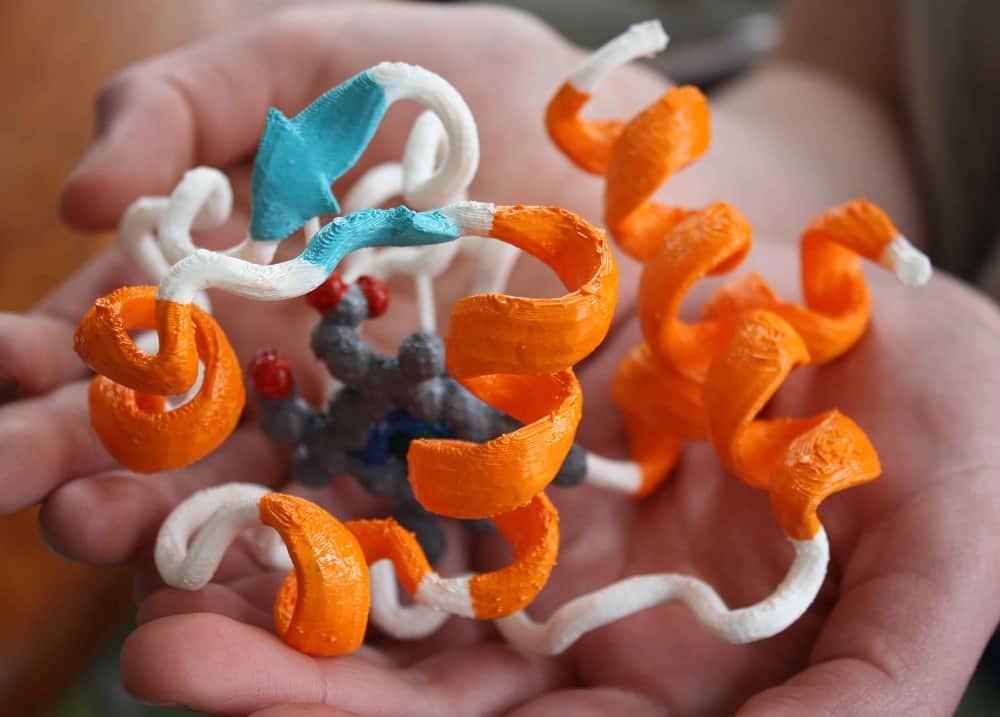Dicer Proteins That Detect and Chop up a Viruses’ Genetic Material
In humans, the vast majority of small regulatory RNAs are miRNAs. They have been found to control the expression of most human protein-coding genes through the miRNA pathway. Moreover, it has been demonstrated that miRNAs play a very important role in host-virus interactions in mammals.
And a fundamental role in the biogenesis of miRNAs in humans is played by a ribonuclease III (RNase III) enzyme termed Dicer. Human Dicer is a 220-kDa multidomain enzyme comprising an amino (N)-terminal putative helicase domain (homologous to DExD/H-box helicases), a DUF283 domain (domain of unknown function), a PAZ (Piwi-Argonaute-Zwille) domain, two RNase III domains (RNase IIIa and RNase IIIb) and a dsRNA-binding domain (dsRBD). But a lack of structural data has limited the understanding of Dicer-mediated processes.
Now, a new study by researchers at the University of Utah Health has found this tiny cellular machine to chop a viruses’ genetic material into bits. Their research shows how the machine detects the intruders and processes them for destruction to protect cells and prevent the spread of infection.
At first glance, the “L”-shaped protein, aptly named Dicer, doesn’t look like anything special. But put it next to virus, and its machete-like properties spring to life. Viruses spread infection by replicating and copying their genomic material inside the cell, and during this process make double-stranded RNA (dsRNA). Dicer rids the cell of the offending intruder by grabbing hold of the rope-like dsRNA, chopping it into pieces as it reels it in.
One small difference between viral and cellular dsRNA is responsible for giving the virus away as an unwanted intruder. The ends of the strands of viral dsRNA are even, while one strand of cellular dsRNA is a tad longer than the other.
“Dicer has to be careful about what it destroys because otherwise it would shut down the cell,” explains graduate student and first author Niladri Sinha. “Seeing how Dicer works answers a long-standing question of how antiviral-receptors can discriminate between ‘self’ from ‘non-self’.”

This new view of Dicer has been nearly 20 years in the making. When Brenda Bass, distinguished professor of Biochemistry at U of U Health who co-led the study with assistant professor Peter Shen first started investigating the protein, she noted it had a region known as the helicase domain. But not knowing why, led her to determine whether seeing the protein could help.
Therefore, the team flash-froze and analyzed Dicer using cryo-electron microscopy. Despite using advanced methodologies, it was not easy to get a picture of the protein interacting with viral RNA. Dicer is tiny even by cryo-EM standards. Plus, it bends and moves, making it difficult to pin down.
The scientists overcame these difficulties by using biochemistry to trap the pair in defined poses and then taking hundreds of thousands of images.
They discovered that the mysterious helicase domain defines the previously unknown mechanism for destroying virus: it recognizes the intruder and reels it in just before the kill. Importantly, once the helicase grabs hold of the viral material, it doesn’t let go, improving its chances for eradicting infection.
It’s possible that Dicer only functions this way in flies. But biology has a habit of reusing tools that work well, notes Dr. Shen. “I’m sure people will be thinking that perhaps under certain conditions, or in the presence of additional protein factors, human Dicer could act like the fly’s.”
Such a discovery could give scientists new ways to control viral infection, and our body’s response to infection.























